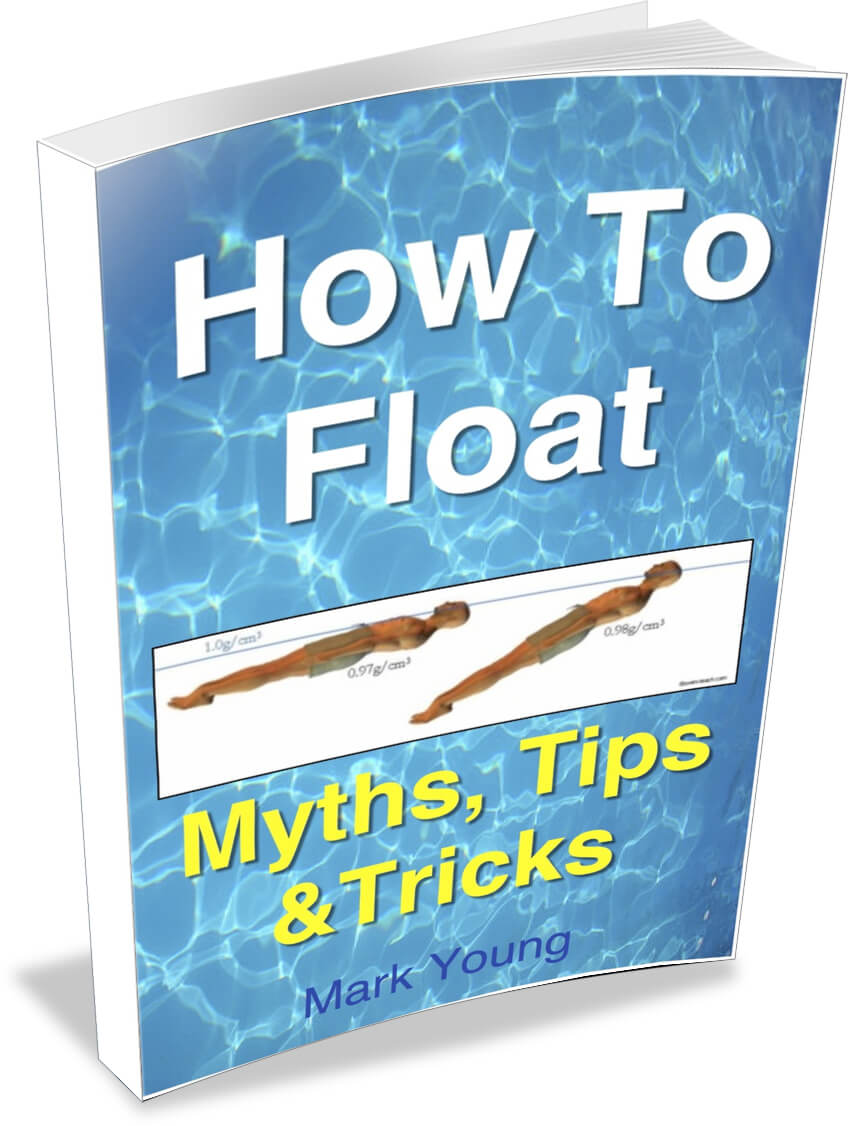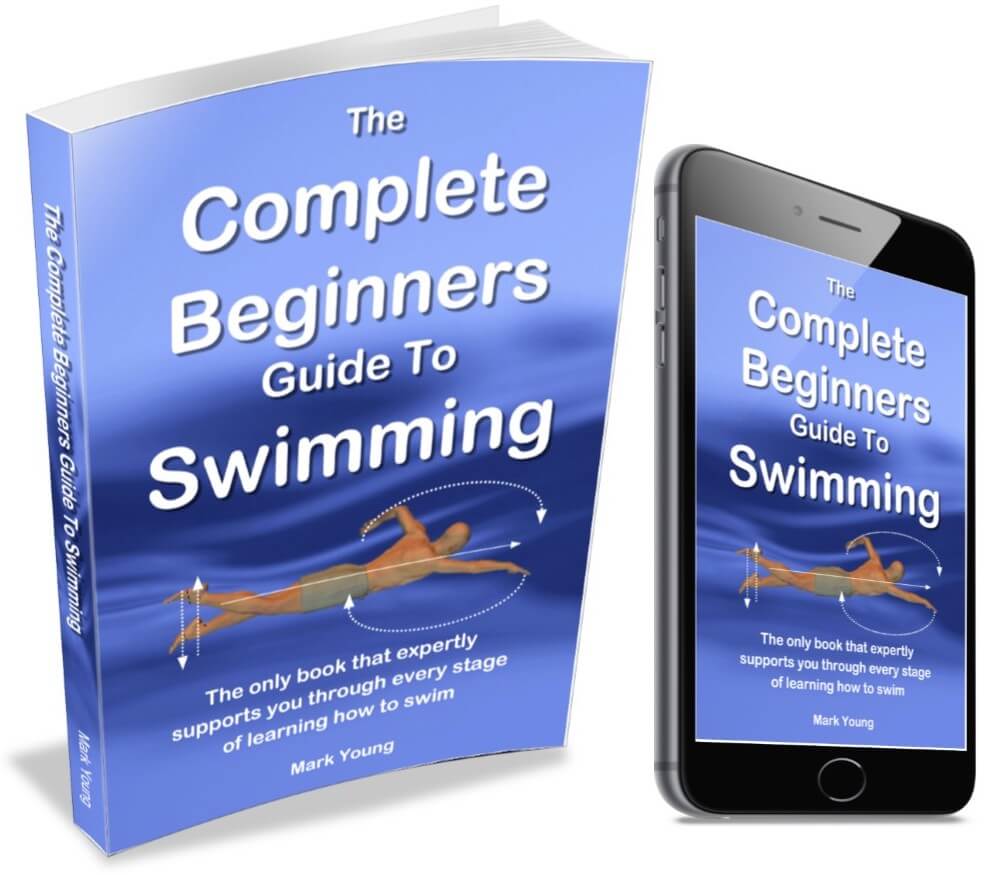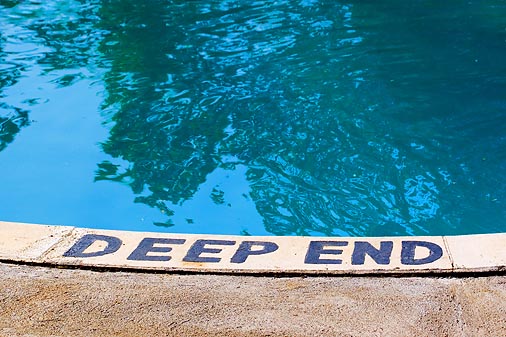- Swim Teach Home
- how to float
- Not Able to Float
Not Able To Float
"I have attended three classes, and however much I try, I am not able to float. My Legs just don't come up and float. My swimming instructor advised me to relax. I tried. Still not working!.. Is it because I am thin and short? My friend who joined me glides through the water easily now. She is much taller and healthier than me and very easily floats. I have no idea what to do! help?"
Mark's answer:
The simple fact is that some people are not able to float, but some people float without even trying. Obviously, you do not float - but that DOES NOT mean you cannot swim.
Most professional swimmers are, like you, natural sinkers. They use the support of the water to keep them at the surface as they swim. You, too, can do the same.
FREE EBOOK: the top 4 best floating exercises are shown in my book 'How To Float', along with the top 4 tips that will stop you sinking as you swim.
Don't miss out! Click here to grab a FREE copy of my book.
Why am I not able to float?
Generally speaking, muscular, lean or thin people tend to sink, and those with a wider surface area or a higher body fat percentage will usually remain afloat for longer. It's all down to your 'relative density', and that is most likely the reason you are not able to float.
Let me explain relative density in more detail.
First, Let's clarify: Floating whilst stationary in one place and staying afloat whilst swimming are entirely different concepts.
Your ability to float is all down to your relative density. What does that mean? Take this example: a log floats, and a rock sinks. The log floats because its density is low relative to the density of the water. But the rock sinks because its density is high relative to the density of the water.
How does this relate to the human body? Let's say that the log is fat and the rock is muscle. Okay, there's more to the human body than fat and muscle. There are bones, organs, blood and stuff like that, and they all contribute to your overall density. To keep this simple, let's stick to fat and muscle.
People with a higher fat content will tend to float. Lean and muscular people will tend to sink naturally. If you naturally sink, it does not mean that you cannot swim!
Let's go back to our naturally sinking rock. Like you, it has a slightly streamlined shape, so when propelled across the surface of the water, it will remain at the surface for a short time before it sinks.
Create a streamlined shape as you propel yourself through the water; add some basic swimming techniques, and you will remain at the water's surface as you swim!
What Can I Do About It?
There are some great exercises to try out in the pool that will help you learn how your body behaves in the water and discover your level of buoyancy. Exercises include:
- Prone (face down) floating: take a deep breath, place your face down in the water and allow your feet to come up from the pool floor. From there, feel how your body moves, which parts sink and how the water supports you. Repeat this several times and enjoy experiencing your body's behaviour in the water.
- Push and glide from the poolside: push away from the poolside with one foot and create a streamlined body position as you glide across the surface. Ensure your hands and feet are together to allow your body to cut through the water efficiently.
- Push and glide, adding kicks: repeat the push and glide exercise above and add a gentle and relaxed leg kick action to assist your momentum.
- Supine (face-up) push and glide: push away from the poolside in a face-up position with your arms by your sides. Keep your chest and hips at or near the surface, and again, feel the water trying to support you.
Click here to find these exercises explained in more detail.
Remember, floating in a stationary position and staying afloat whilst swimming are entirely different things. Most people are not able to float in one place, but everyone can float as they swim, regardless of age, shape, size or gender.
Is my fear of water holding me back?
There are some fundamental aspects of learning to swim that you need to become comfortable with if you are going to conquer your fear of water - essential elements that are key to staying afloat as you swim.
They are:
- learning how to submerge
- learning to hold your breath and breathe out in the water
- how to relax
- how to glide
Then, it's a case of using your arms and legs to move through the water. Before you know it, you will remain afloat at the water's surface whilst you swim. Job done!
The power and momentum generated from your arm and leg techniques help propel you through the water, reducing the likelihood of you sinking as you swim.
So, stop trying to float in a static position and get on with using your arms and legs to learn a swimming stroke! Before you know it, you will be a happy and confident swimmer.
Which swimming stroke should I learn first?
Beginners learning to swim breaststroke will find floating easier than those learning to swim front crawl.
The arm and leg movements of breaststroke are wide and, therefore, cover a larger surface area of water, making it easier to remain there. The body position for breaststroke is angled so the leg kick can occur slightly deeper under the water, favouring those who tend to sink.
Front crawl, however, is a more streamlined stroke and, therefore, has a longer and narrower shape, making it more difficult for the legs to stay up near the surface as they kick.
A relaxed and flowing front crawl leg kick is essential to keep the legs near the surface. A faster and more forceful kick will almost certainly make the legs sink quicker.
Click on a swimming stroke below for more in-depth information.
Need some support with learning to stay afloat?
Still think you are not able to float? My book 'The Complete Beginners Guide To Swimming' will show you exactly how to glide, breathe and relax. Then it will show you how to master the technique needed to swim the four basic strokes.
$14.99
I am a member of the Amazon Associates Program and I will earn a commission from qualifying purchases at no extra cost to you.














